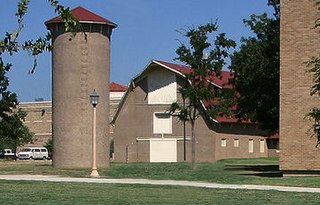The following outline is provided as an overview of and topical guide to agriculture:

Communication studies or communication science is an academic discipline that deals with processes of human communication and behavior, patterns of communication in interpersonal relationships, social interactions and communication in different cultures. Communication is commonly defined as giving, receiving or exchanging ideas, information, signals or messages through appropriate media, enabling individuals or groups to persuade, to seek information, to give information or to express emotions effectively. Communication studies is a social science that uses various methods of empirical investigation and critical analysis to develop a body of knowledge that encompasses a range of topics, from face-to-face conversation at a level of individual agency and interaction to social and cultural communication systems at a macro level.
Development communication refers to the use of communication to facilitate social development. Development communication engages stakeholders and policy makers, establishes conducive environments, assesses risks and opportunities and promotes information exchange to create positive social change via sustainable development. Development communication techniques include information dissemination and education, behavior change, social marketing, social mobilization, media advocacy, communication for social change, and community participation.
Agricultural economics is an applied field of economics concerned with the application of economic theory in optimizing the production and distribution of food and fiber products. Agricultural economics began as a branch of economics that specifically dealt with land usage. It focused on maximizing the crop yield while maintaining a good soil ecosystem. Throughout the 20th century the discipline expanded and the current scope of the discipline is much broader. Agricultural economics today includes a variety of applied areas, having considerable overlap with conventional economics. Agricultural economists have made substantial contributions to research in economics, econometrics, development economics, and environmental economics. Agricultural economics influences food policy, agricultural policy, and environmental policy.
Agribusiness is the industry, enterprises, and the field of study of value chains in agriculture and in the bio-economy, in which case it is also called bio-business or bio-enterprise. The primary goal of agribusiness is to maximize profit while satisfying the needs of consumers for products related to natural resources such as biotechnology, farms, food, forestry, fisheries, fuel, and fiber.
Agricultural extension is the application of scientific research and new knowledge to agricultural practices through farmer education. The field of 'extension' now encompasses a wider range of communication and learning activities organized for rural people by educators from different disciplines, including agriculture, agricultural marketing, health, and business studies.

Agricultural education is the systematic and organized teaching, instruction and training available to students, farmers or individuals interested in the science, business and technology of agriculture as well as the management of land, environment and natural resources.

Science journalism conveys reporting about science to the public. The field typically involves interactions between scientists, journalists and the public.
Environmental journalism is the collection, verification, production, distribution and exhibition of information regarding current events, trends, and issues associated with the non-human world. To be an environmental journalist, one must have an understanding of scientific language. The individual needs to put to use their knowledge of historical environmental events. One must have the ability to follow environmental policy decisions and environmental organizations. An environmental journalist should have a general understanding of current environmental concerns, and the ability to communicate information to the public in a way that is easily understood.

Environmental communication is "the dissemination of information and the implementation of communication practices that are related to the environment. In the beginning, environmental communication was a narrow area of communication; however, nowadays, it is a broad field that includes research and practices regarding how different actors interact with regard to topics related to the environment and how cultural products influence society toward environmental issues".
The School of Communication and Information (SC&I) is a professional school within the New Brunswick Campus of Rutgers, The State University of New Jersey. The school was created in 1982 as a result of a merger between the Graduate School of Library and Information Studies, the School of Communication Studies, and the Livingston Department of Urban Journalism. The school has about 2,500 students at the undergraduate, masters, and doctoral levels, and about 60 full-time faculty.
The Science Communication Observatory is a Special Research Centre attached to the Department of Communication of the Pompeu Fabra University in Barcelona, Spain, set up in 1994. This centre is specialized in the study and analysis of the transmission of scientific, medical, environmental and technological knowledge to society. The journalist Vladimir de Semir, associated professor of Science Journalism at the Pompeu Fabra University, was the founder and is the current director of the centre. A multidisciplinary team of researchers coming from different backgrounds is working on various lines of research: science communication; popularization of sciences, risk and crisis communication; science communication and knowledge representation; journalism specialized in science and technology; scientific discourse analysis; health and medicine in the daily press; relationships between science journals and mass media; history of science communication; public understanding of science; gender and science in the mass media, promotion of scientific vocations, science museology, etc.

The University of Wisconsin–Madison College of Agricultural and Life Sciences is one of the colleges of the University of Wisconsin–Madison. Founded in 1889, the college has 17 academic departments, 23 undergraduate majors, and 49 graduate programs.

Medical journalism is news reporting of medical news and features. Medical journalism is diverse, and reflects its audience. The main division is into (1) medical journalism for the general public, which includes medical coverage in general news publications and in specialty medical publications, and (2) medical journalism for doctors and other professionals, which often appears in peer-reviewed journals. The accuracy of medical journalism varies widely. Reviews of mass media publications have graded most stories unsatisfactory, although there were examples of excellence. Other reviews have found that most errors in mass media publications were the result of repeating errors in the original journal articles or their press releases. Some web sites, such as Columbia Journalism Review and Hippocrates Med Review, publish and review medical journalism.
The Faculty of Agriculture of Kagawa University specializes in pure and applied research in bioscience and biotechnology.
Agricultural literacy is a phrase being used by several universities to describe programs to promote the understanding and knowledge necessary to synthesize, analyze, and communicate basic information about agriculture with students, producers, consumers, and the public. These programs focus on assisting educators and others to effectively incorporate information about agriculture into subjects being taught or examined in public and private forums and to better understand the impact of agriculture on society.

Alison L. Van Eenennaam is a Cooperative Extension Specialist in the Department of Animal Science at the University of California, Davis and runs the Animal Genomics and Biotechnology Laboratory. She has served on national committees such as the USDA National Advisory Committee on Biotechnology in the 21st Century (AC21) and was awarded the 2014 Borlaug CAST Communication Award. Van Eenennaam writes the Biobeef Blog.

The Lilongwe University of Agriculture and Natural Resources (LUANAR) is a university outside Lilongwe, Malawi. It was formed in 2011 by a merger between Bunda College of Agriculture of the University of Malawi and Natural Resources College (NRC).

Scott H. Irwin is the Laurence J. Norton Chair of Agricultural Marketing and professor in the department of agricultural and consumer economics at University of Illinois Urbana-Champaign.
Agricultural journalism is a field of journalism that focuses on the various aspects of agriculture, including agribusiness, best practices and changing conditions for agriculture. Agricultural journalism is part of agricultural communication, an academic and professional field focused on best practices for communicating about agriculture. This kind of knowledge transfer, both identify the perspectives of agriculturalists in larger news stories, such as weather or economics, and transfers knowledge from knowledge holders, policy makers and researchers, to agricultural producers and other implementers involved in growing or processing food.










